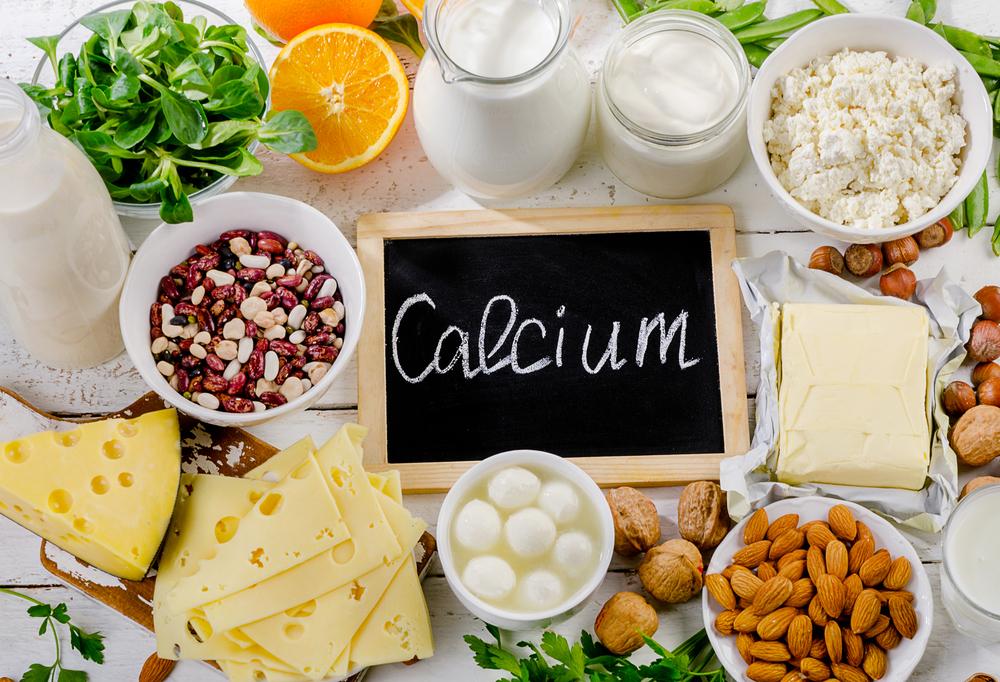Eating For Bone Health
In the UK, more than 10 million people have arthritis, or other similar conditions that affect the joints. Although arthritis is more common in older people, it can affect people of all ages, including children. Arthritis can affect quality of life and make daily activities a challenge (such as climbing the stairs, preparing/cooking food).
It is important to have a well-balanced diet and maintain a healthy bodyweight when you live with arthritis. A healthy diet and lifestyle can help to manage the symptoms and also help reduce the risk of other diseases, such as obesity, cardiovascular disease and type 2 diabetes.
Diet is a topic of interest for many people living with arthritis. No special diet or ‘miracle food’ can cure arthritis, but there is a great deal of popular advice on diet and arthritis that does not have scientific evidence to support it and may be confusing.
Osteoarthritis and diet
A healthy weight
Weight loss is recommended as a core treatment for people who are overweight and obese. Reaching or maintaining a healthy weight can relieve pain, improve function, and slow the progression of OA.
Overweight is a crucial factor in OA since overload to the affected joint is one of the risk factors for developing OA or worsening of the symptoms of OA. Losing weight reduces pressure on joints, particularly weight bearing joints like the hips and knees.
There is increasing interest in not only reducing weight but specifically in reducing fat (or adipose) tissue, as it is now recognised that fat tissue is active and can secrete several chemical factors, some of which may have inflammatory effects.
Osteoarthritis and physical activity
Painful joints and stiffness can reduce mobility and make it more difficult to be physically active. However, physical activity can help maintain a healthy bodyweight and protect joints by keeping muscles strong, reduce joint loading, increasing your range of movement and reducing stiffness.
Local muscle strengthening exercises (activities such as yoga, pilates or dancing that work the major muscles) and aerobic exercise (activities such as walking, cycling or swimming that temporarily increase your heart rate and respiration) are recommended.
It is important to find the right type of activity for you. Ask your GP to refer you to a physiotherapist, who can help you work out a suitable programme.
Healthy dietary patterns for osteoarthritis and more
Some research suggests a link between high blood cholesterol and increased risk and progression of OA, although it is unclear whether lowering blood cholesterol will improve OA. In any case raised blood cholesterol is a risk factor for cardiovascular disease and it is important to try and adopt healthy dietary patterns that may help to reduce blood cholesterol and the risk of cardiovascular disease, and maintain weight – see some of our tips below.
- Try to include a variety of at least five portions of fruit and vegetables, higher fibre starchy foods (choose wholegrain or higher fibre versions with less added fat, salt and sugar), dairy and dairy alternatives (choose lower fat and lower sugar options), as well as beans, pulses, fish, eggs, lean meat and other protein sources. Avoid unhealthy habits, like smoking and drinking in excess and include regular physical activity.
- A healthy diet includes plenty of foods containing fibre such as nuts, wholegrains, beans, pulses, fruits and vegetables. But for cholesterol lowering you may want to also try eating oats and barley, which have a special soluble fibre called beta–glucan which can help to reduce blood cholesterol levels.
- Reduce foods high in saturated fats in your diet like sausages, butter, biscuits, cake, pies, pastries and fatty meats, and replace with those containing unsaturated fats (mono- and polyunsaturated), like oily fish, avocados, nuts and seeds and small amounts of olive, rapeseed and sunflower oils and unsaturated spreads made from them (see image below).
Rheumatoid arthritis
Rheumatoid arthritis (RA) is a long-term inflammatory condition that causes pain, swelling and stiffness in joints. The hands, wrists and feet are typically affected, but it may affect almost any joint. It is an auto-immune condition so happens when the body’s immune system, which usually fights infection, starts to attack healthy joints instead. At times symptoms can become suddenly worse causing severe pain and making it hard to go about normal everyday life. Rheumatoid arthritis is associated with a number of complications and comorbidities (conditions that often occur together with another condition) such as an increased risk of cardiovascular disease and osteoporosis (a condition that weakens bones).
Rheumatoid arthritis is less common than osteoarthritis, but it nonetheless is estimated to affect over 400,000 adults in the UK. There is no permanent cure, and it can have a significant personal impact for people with the disease and their families and carers. However, early treatment can help to control it and help people carry on active and full lives. Medical management with drug therapy aims to relieve pain and stiffness and help mobility, and to change the progress of the disease that can limit functioning in daily activities.
Rheumatoid arthritis and diet
Diet and inflammation
People living with RA often use dietary changes and follow a variety of special diets to try to improve symptoms. A wide range of anecdotal dietary advice is available to improve symptoms but there is a lack of scientific information to support these, and some of the claimed benefits for diets are yet to be confirmed.
The most common dietary patterns tried are those that may have anti-inflammatory benefit or increase antioxidant levels (see section on antioxidants below). Other dietary strategies focus on cutting out foods or food groups that may be perceived as the cause of symptoms. Diets often tried include vegan, Mediterranean, elemental or elimination diets. However, much clarification is still needed to understand the relationship between diet and RA. It is currently unclear from the research whether diets can improve pain, stiffness and the ability to move better. Available evidence does not establish diet as a substitute for pharmaceutical treatments.
For people living with RA it is important to be aware of the dietary advice for which there is some evidence of benefit, and where the evidence is limited, as well as awareness that some alternative diets proposed can compromise nutrient intake.
What does the research say?
Mediterranean diet
UK NICE guidelines recommend that adults with RA who wish to experiment with their diet should be informed that there is no strong evidence that their arthritis will benefit. However, they could be encouraged to follow the principles of a Mediterranean diet. The Mediterranean diet is rich in plant-based foods such as wholegrains, beans, pulses, fruit and vegetables, and with moderate amounts of fish, low to moderate amounts of dairy products, low intake of meat, and olive oil as an important fat source.
Whilst research supports the Mediterranean diet for certain conditions such as the prevention of cardiovascular disease, there is limited evidence currently to suggest that the Mediterranean diet is beneficial in the prevention and treatment of RA. Only a small number of studies have identified beneficial effects of the Mediterranean diet in reducing pain and increasing physical function, and high-quality studies investigating the long-term effects are required to provide more conclusive answers. However, people with RA may want to follow a Mediterranean style diet as it is a healthy, non-restrictive, balanced dietary pattern that can meet nutritional requirements, and may have benefit to other health conditions, as well as helping some patients with RA.
Rheumatoid arthritis and supplements
Antioxidants
A diet rich in antioxidants may help to reduce the risk of developing RA and possibly dampen down the inflammatory response in established disease. These nutrients can be found in a healthy, balanced diet (see table below for dietary sources). However, the benefit of antioxidant nutrient supplements like vitamin A, vitamin C, vitamin E, selenium and zinc is not supported by scientific trials in patients with RA. In addition, it is important to note that ‘mega-dosing’ (intakes in doses well above current recommendations), whether self-administered or suggested by alternative practitioners, can have adverse effects and is inadvisable.
Fish oils
There is some evidence to suggest that taking fish oil supplements may be useful as an addition to existing treatments for reducing joint pain and stiffness.
Whilst the current UK NICE guidelines for management of RA do not discuss the role of fish oil supplements, their use of appears to be common among RA patients. However, the optimal dose of long-chain omega-3 fats that may be helpful in relieving symptoms of RA is unclear, and it has been reported that supplementation can take up to three months before symptom relief is experienced.
Probiotics
More recently, scientists have suggested that the gut microbiome – the bacteria that live in our gut – may also be a factor in the development of RA but the clinical effects of probiotics (usually described as ‘good’ bacteria found in food products/supplements) in RA remain unclear.
Eliminating foods
It is a common belief among people living with RA that certain foods or ingredients have adverse effects, and that a food allergy/intolerance may cause or make inflammation worse.
Several reviews have aimed to evaluate the effectiveness of a range of interventions that restrict certain foods for the treatment of RA and management of its side effects. These include:
- vegan diets
- elemental diets (liquid diets that contain nutrients that are broken down to make digestion easier)
- fasting
- elimination diets (used to find foods that might be the cause of symptoms)
However, there is very limited research in this area and the results remain largely unclear. It is uncertain whether any of these dietary strategies can improve pain and stiffness, and the ability to move better. There may be considerable individual variation, in other words, certain individuals or subgroups may show improvement if they cut out certain foods or ingredients, but many others do not. Furthermore, some of these diets may be difficult to stick to, and people may lose weight on these diets even though they did not need or plan to.
Fasting
Reduction of pain and inflammation has been reported with fasting and elemental diets. It is recognised that inflammatory activity is dampened by caloric restriction or reduction in gut involvement, but the results noted after fasting and very restricted diets could also be because of weight loss. In addition, such diets are not sustainable and carry significant health risks. Fasting is an extreme and temporary way of controlling pain and inflammation in RA and is not recommended. Symptoms return on resumption of regular diets; thus the benefit may be transient and not have long-term impact on disease activity.
Authoritative bodies typically will not suggest cutting out important food groups as this can increase risk of nutritional deficiency.
Shopping, preparing and cooking food - some tips
Cooking at home can be an enjoyable experience and can help with eating healthily. However, when movement is restricted activities around cooking including shopping and preparation can be difficult (such as lifting grocery bags, opening jars, dicing and slicing and lifting pots).
Shopping
- If lifting shopping bags is difficult, consider getting heavier items delivered through online shopping. That way you can still visit the supermarket if you like to, but only buy lighter items.
- Making lists ahead of time can help avoid unnecessary trips and can help you plan your route in the shop so you can limit the time spent and walked around it.
- Use convenience foods to help you when you need to, for example ready-prepared food such as chopped vegetables, grated cheese and roasted potatoes.
- Frozen vegetables are another way to avoid chopping fresh vegetables. Have some pre-prepared ingredients and ready-made meals in the freezer to avoid struggling when your arthritis is particularly troublesome.
Food preparation and cooking
- If you find peeling fruit and vegetables painful (such as potatoes and carrots) then try washing them thoroughly and keeping the skins on – this will also help to keep important nutrients such as fibre.
- Use suitable equipment or special gadgets to help you. Always try different utensils to see how the feel. Appliances like electric can openers, microwaves and handheld blenders can make food preparation and cooking easier.
- If you are cooking a recipe, why not make double and freeze it so meals can be readily available when you are in pain or tired. Remember to label the containers and the date they were frozen.
- Think about how you arrange cupboards and work surfaces to make items easier to reach.



















